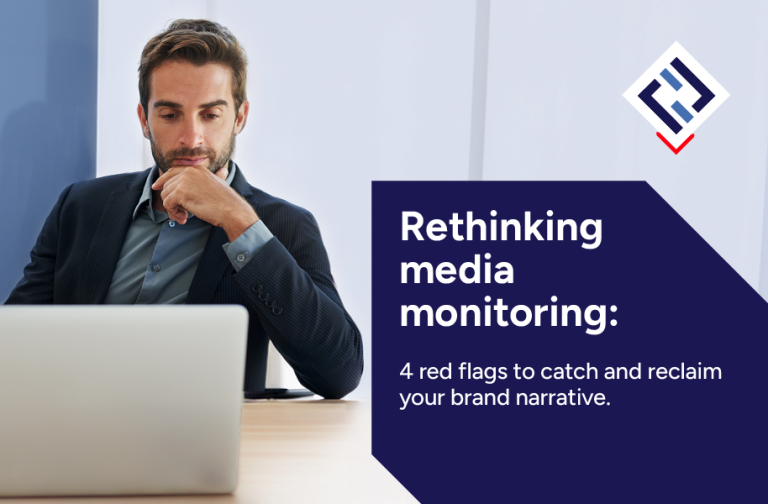
Your brain is wired against marketing success: 5 unconscious patterns wasting your resources
Marketing is getting impossibly hard, and if you’re wondering how that’s possible with all our fancy AI and attribution models, you’re not alone.
We have more data than marketers could have dreamed of a decade ago. Attribution models that track every touchpoint. AI that optimizes campaigns in real time. Platforms that promise increasingly precise targeting based on user behavior and intent signals.
So why does every campaign feel like you’re solving a Rubik’s cube blindfolded?
We’ve been thinking about this paradox a lot lately. We’re drowning in solutions to problems we didn’t even know we had a decade ago, yet every marketer we know sounds like they’re fighting an uphill battle.
The tools got smarter, but somehow the game got harder.
Attribution is messier, audiences are more fragmented, and the abundance of data intended to foster clarity often breeds greater complexity. To find our way, we often switch to autopilot, using mental shortcuts to make decisions quickly. This feels efficient and reassuring.
The catch is that these shortcuts oversimplify things. While they help us move fast, they can also lead us in the wrong direction. They create blind spots, waste budget, and distract us from the work that will deliver results.
The first step to better decisions is simply noticing these habits. Here are the five most common and costly patterns wasting your marketing resources, and how to break free from them.
-
Blindly trusting what your brain tells you
Our brains are pattern-matching machines that love being right more than being accurate. In marketing, this translates to unconsciously seeking evidence that supports our existing beliefs about our audience while brushing off contradictory data as outliers, flukes, or “probably not our target market anyway.” It’s easy to favor data that confirms a current hypothesis, rationalize poor performance with creative explanations, and double down on strategies that feel justified internally, even when external reality is screaming otherwise.
Story time: The SaaS pricing page disaster
A B2B SaaS company burned through $40K in three months because the founder was convinced that “enterprise customers want premium positioning.” They built a pricing page with three tiers: $99, $299, and $899 per month. The messaging was all about “enterprise-grade security” and “mission-critical reliability.”
The founder loved it. The sales team loved it. It felt sophisticated and serious.
Reality had other plans:
- 67% of visitors bounced within 8 seconds
- The few who converted grabbed the $99 tier and churned within 30 days
- User interviews revealed their actual audience: 5-15 person startups asking “Can this replace the three tools we’re currently duct-taping together?”
As it turns out, enterprise-grade security was not the first thing on their minds; they were small teams drowning in operational chaos, frustrated by the detour required to update a simple client project across three different platforms.
This was a case of confirmation bias at work, with the marketing team seeing every internal conversation as validation for their brand’s “premium positioning.” Any data that challenged this view was dismissed as irrelevant, and every dollar flowed toward validating an assumption instead of discovering reality.
The antidote: Multi-source reality checks
The clearest predictor of marketing success is well-chosen, real-time data that escapes the biases inherent to self-reported data. As our VP of Marketing, Yara Milbes, puts it: “Marketing today is a high-stakes battlefield where intuition is obsolete, and intelligence reigns supreme.”
The goal is not to silence instinct but to interrogate it:
- Test your assumptions and track your experiments.
- Treat every campaign as a hypothesis to be examined rather than a hill to die on.
- Listen to customers in their own words, not the words you wish they used.
- Study their journeys with curiosity, not rigidity.
Most importantly, run monthly “assumption audits” where the team must present evidence that contradicts their current strategy. By making it safe to be wrong, you’ll encourage the hunt for real insights. One practical way to do this is by examining your brand narratives and paying particular attention to those that challenge your assumptions. The results might surprise you.
-
Sticking to your old ways
We’re creatures of habit, and in marketing, our habits can become expensive comfort blankets. Familiar strategies feel safe because they have delivered results before, and relinquishing that safety is never easy. Your team members might be clinging to the same research routines, the same methods of interpreting results, the same reporting templates, because those patterns protect them from risk. But what begins as caution soon becomes inertia. Markets don’t respect our comfort zones, and what worked months or years ago might be quietly strangling your growth today.
Story time: The attribution addiction
A performance marketing team at a fintech startup swore by their Facebook ads. For two years, their attribution models had been treated as absolute. They could tell you the exact return on ad spend (ROAS) of every campaign down to the creative variant and audience segment.
But their customers had quietly migrated. Freelancers and small business owners were discovering financial tools through YouTube creators, productivity newsletters, and niche online communities. These channels offered messy attribution, with no clean pixel tracking, no direct click-through paths, just survey responses mentioning “that YouTuber who talks about side hustles.”
The team saw the survey data. They knew where their audience was spending time. But Facebook ads were their specialty. Moving budget to influencer partnerships or newsletter sponsorships felt like abandoning everything they’d built.
So they optimized harder. Better targeting, more creative variants, sophisticated lookalike audiences. Meanwhile, competitors were quietly building relationships with micro-influencers and newsletter writers, capturing market share while the team perfected campaigns for an increasingly expensive and saturated channel.
It wasn’t merely a question of wasted ad dollars. Eighteen months of opportunity quietly passed into the hands of competitors willing to follow the market rather than defend their methods.
The antidote: Agility over perfection
Breaking free begins with curiosity and a willingness to question what feels familiar.
- Look beyond the metrics you habitually track and pay attention to the signals that reveal how your audience behaves and what drives their decisions.
- Explore new channels even when the data isn’t neat.
- Treat every experiment as a lens into audience patterns, not a test to justify past choices.
Remember: growth often hides in the spaces where certainty falters and curiosity leads.
-
Avoiding hard decisions
Our brains notice losses more strongly than gains and react with fear or caution, which makes giving up on old investments unnervingly hard. Losing something we’ve already put time, money, or effort into feels worse than gaining the same value. In practice, this shows up as campaigns that limp along for “one more quarter,” analysis paralysis when data isn’t perfectly clear, and teams that optimize for not making mistakes rather than pursuing growth. The fear of “wasting” a current investment often blinds teams to the much larger cost of missed opportunities.
Story team: The conference sponsorship limbo
A travel technology company spent eight months debating whether to kill their $150K annual trade show circuit. The numbers painted a brutal picture: three years of premium booth spaces at industry conferences, countless branded luggage giveaways, and exactly two enterprise deals that could be traced back to conference conversations.
In reality, the true engine of their growth comes from content partnerships with travel bloggers and organic search traffic from destination guides. But conferences felt important. They were an industry tradition. Competitors had massive pavilions. What if they missed the hospitality chain executive who would finally unlock their enterprise segment?
Every quarterly review followed the same script: “Let’s see how the next show performs.” The marketing director couldn’t shake the feeling that pulling out would signal weakness to competitors who’d been attending these events for decades.
Meanwhile, their content strategy was hemorrhaging potential. The team had identified trending destinations and travel patterns that could drive massive organic traffic, but the conference budget consumed resources that could have funded months of strategic content creation.
Loss aversion was running the show. The psychological sting of “wasting” conference investments felt more intense than the abstract promise of content marketing gains. The team knew conferences weren’t delivering, but admitting failure felt worse than continuing to throw money at tradition.
By the eighth month the warning signs could no longer be ignored. A $50K spent on a premium booth yielded four business cards and zero follow-up meetings. After moving the spend into destination content and influencer partnerships, the company averaged 80 qualified leads per month over the next two months, a stronger return than the last three trade show cycles combined.
The antidote: Pre-committed decision points
Set clear success metrics and timelines before launching any initiative. For example: “If this doesn’t generate X qualified leads in Y months, we redirect the budget to Z alternative.” Make the decision while optimistic, then honor it when emotions are high.
Monitor conversations around industry events in real time to gauge actual sentiment versus marketing hype. Often, the “everyone will be there” assumption crumbles when you see how little meaningful discussion these events actually generate. Track competitor mentions and sentiment around their own initiatives. Sometimes the best decision is watching others waste money while you optimize elsewhere.
-
Misdirecting your creative energy
Metrics like likes, shares, impressions, and click-through rates give instant feedback, drawing attention and energy toward what’s immediately visible. Teams naturally focus on these numbers because they’re easy to track and satisfying to watch rise, while deeper, slower-moving indicators—conversion rates, revenue attribution, and customer lifetime value—get less scrutiny. This misdirected creative energy doesn’t mean effort is wasted, but it often gets spent on campaigns that maximize engagement over business impact. In practice, marketing becomes a careful choreography of what looks good now rather than what drives lasting results.
Story time: The viral vanity trap
An AI startup in Abu Dhabi had built something genuinely innovative: machine learning that could predict supply chain disruptions for logistics companies. Their target customers were operations directors at major shipping firms—serious people solving expensive problems with million-dollar decisions.
Their marketing manager, however, discovered the intoxicating world of LinkedIn thought leadership. She crafted a post about “AI’s role in Middle Eastern business transformation” that exploded across the platform: 2,400 likes, 340 comments, 180 shares. Tech journalists started following her. Industry influencers were sliding into her DMs.
The dopamine rush was incredible.
So she doubled down. More posts about “the future of AI in the region.” Contrarian takes on automation. Hot takes about digital transformation. Each post generated hundreds of reactions, and her follower count climbed toward 15,000. She felt like she was building the company’s thought leadership empire.
But something strange was happening to their actual business. Lead quality was plummeting. Their comment sections overflowed with AI enthusiasts, marketing professionals, and wannabe influencers—not a single operations director in sight. The viral content that made her feel brilliant was attracting everyone except the logistics executives who could actually write checks.
Meanwhile, her original approach—detailed case studies about supply chain optimization and tactical breakdowns of cost savings—had generated maybe thirty likes per post but consistently attracted the right eyeballs. Those boring posts with minimal engagement had actually driven demo requests from shipping companies.
Six months later, she had built a following of tech enthusiasts but hadn’t closed a single enterprise deal through LinkedIn. The dopamine had been delicious, but the revenue pipeline was bone dry.
The antidote: Engagement quality over quantity
Creative energy is not a resource to be exhausted in pursuit of visibility only. Unfocused creativity can entertain, but directed creativity convinces, converts, and changes behavior.
Channel the same creative fervor behind viral posts into understanding the patterns that lead audiences to take meaningful steps:
- Instead of obsessing over engagement peaks, become fascinated by the specific language patterns that transform casual browsers into serious buyers.
- Track who’s engaging with content, not just how many people.
- Analyze the job titles, company sizes, and buying signals of active participants versus silent observers.
Often the most valuable audience members are lurkers who never comment but convert.
-
Becoming overprotective of your insights
Research demands time, effort, and careful attention, so it’s natural to guard your findings—they are a hard-won advantage. Yet being overprotective of your insights, especially when other departments rely on them and you rely on theirs, can unintentionally create silos, fragment knowledge, and isolate data. Without sharing information, teams lose a holistic understanding of the customer, leading to inconsistent experiences and decisions that fall short of truly addressing customer needs.
Story time: The fragmented customer truth
A government marketing team had unraveled the mystery of why citizens abandoned their newly launched application. The issue was not technology but comprehension. Bureaucratic language and outdated examples turned simple requests into perplexing journeys. Citizens repeatedly visited offices, seeking clarity that should have been available online.
The insights were precious, but the team kept them close, sharing only in internal reports. They feared that revealing the findings might give other departments an advantage. As a result, communications continued issuing confusing announcements, customer service answered repeated avoidable inquiries, and policy teams created new forms using the same opaque language. Citizens remained trapped in a maze, while the organization operated in fragments.
When a new director insisted on sharing the research across departments, the transformation was striking. Messaging was simplified, service scripts were clarified, and policies reflected citizens’ real needs. By connecting previously isolated knowledge, the government achieved a unified view of its audience, improving efficiency, reducing frustration, and restoring trust.
The antidote: Intelligence without borders
Establish regular intelligence-sharing sessions where each team presents their actionable findings. To foster a collaborative environment, all departments should maintain a shared and transparent view of such insights. A centralized platform can support this by making information easily accessible and actionable, enabling teams to align their efforts, make informed decisions, and uncover opportunities that benefit the organization as a whole. Remember to track and celebrate the wins that arise from cross-department knowledge sharing. It reinforces a culture where collective insight informs strategy and shapes better business outcomes.
Remember:
- Marketing isn’t the only source of insights. Other teams see patterns you might miss.
- Breaking silos creates a unified customer view. What was once fragmented knowledge becomes a collaborative advantage.
When insights flow freely, expertise multiplies, and the customer experience gets stronger at every touchpoint.
Awareness is the first step toward any change
Effective marketing isn’t a test of intuition but a test of humility. It’s the humility to accept that your brain will take shortcuts, cling to the past, and seek applause—and to decide you’re going to build anyway.
The only sustainable solution is to stop fighting your brain and build a better environment for it that directs bias toward wiser choices.
This means:
- Making it a habit to test your assumptions against observable insights.
- Honoring results over ritual and allowing successful new paths to redefine what is “tried and true.”
- Deciding in advance the criteria that will compel you to change course or continue.
- Giving new data time to settle before reacting to allow clear signals to emerge from noise.
- Focusing only on metrics that guide meaningful action, letting the rest fall away.
Once you start building these habits into your team’s workflow, you stop betting on the myth of perfect instinct.
To make that shift easier, why not give your marketing team a head start? Equip them with Lucidya’s AI-powered Monitor to spot bias, act on real insights, and turn every campaign into a learning engine.









